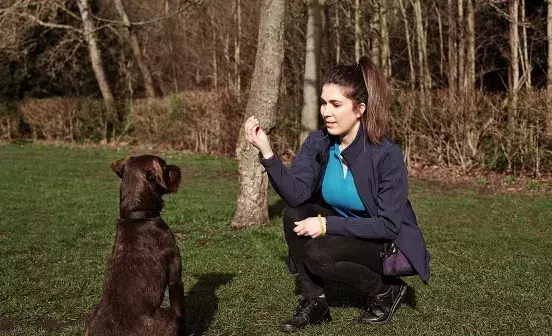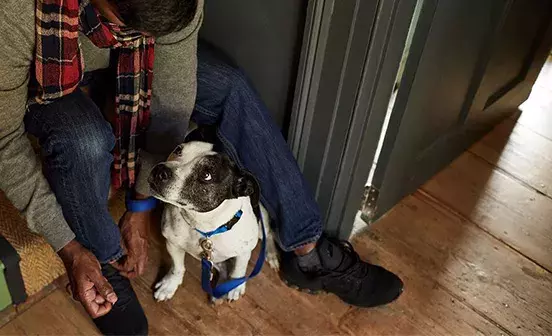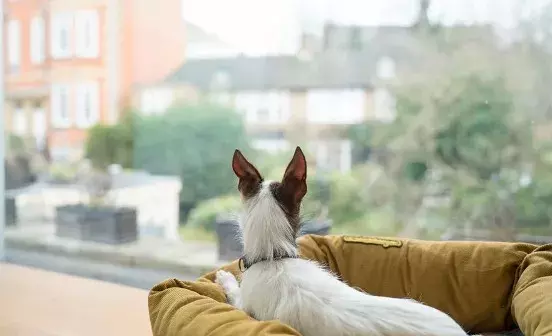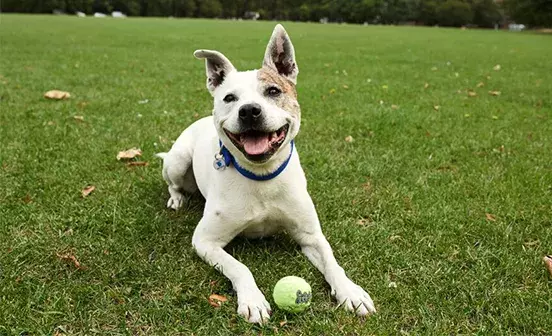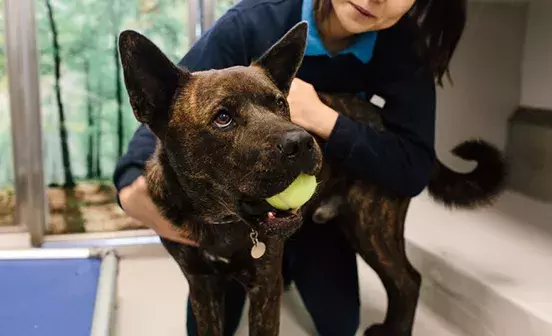Teaching your dog to stay is a really useful command for your dog to know and there are lots of situations where you might want to use it. For example, you may want them to wait before coming into the house after a muddy walk, so that you can get a towel to dry them off.
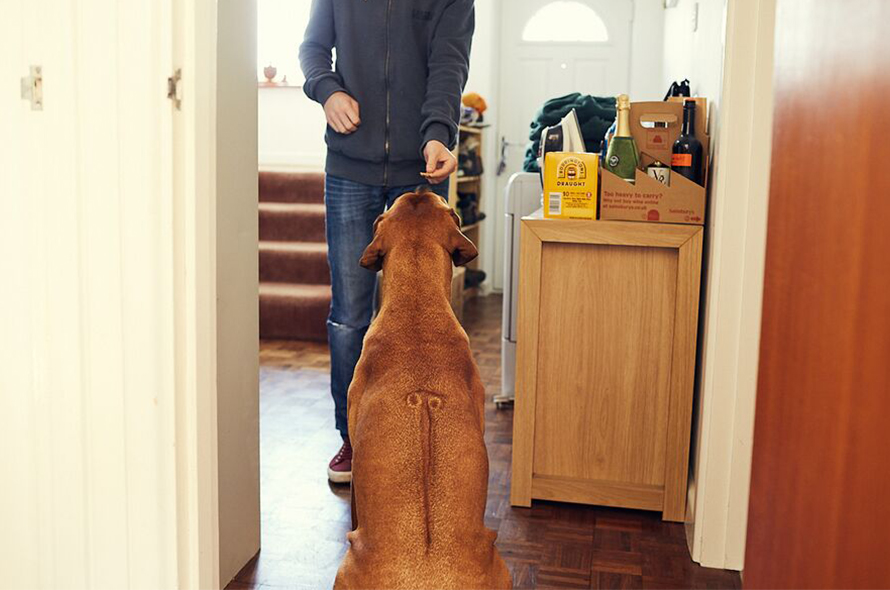
Even if your dog masters a stay, we would never recommend leaving them unattended in public, for example, asking them to wait outside whilst you’re in a shop.
Watch our video below outlining the steps to teach your dog a stay:
Teaching a dog to stay
Step one
To start teaching a dog to stay, choose a quiet location that is familiar to your dog. This should mean they are less keen to go off exploring or get distracted.
You also want to make sure that your dog is calm when you start this training. If your dog is naturally energetic, you may want to try after they’ve been for a walk.
You can teach a dog to stay from any starting position, a sit, down, or stand but you do need to have taught them that first. Choose whichever position they find most comfortable. You will also need to pick a cue word, and make sure you stick to it. Something like ‘Stay’ or ‘Wait’ works well.
Step two
Ask your dog to get into your chosen starting position and praise them for it. Then, give your dog the verbal cue ‘Stay’, followed by a clear hand signal. Holding your hand up with a flat palm facing away from you works well. Take the hand signal away, and quickly reward your dog before they move.
You’re going to need to be fast with this, so you may want to practice this without your dog there first. Once you can do this 5 times in a row, without your dog getting up before you have chance to reward them, move on to the next stage.
Step three
Now, you’re going to repeat the same steps, but this time, as you remove your hand signal, break eye contact by looking away from your dog. Then, reward them as before. Eye contact is a big anchor for dogs’ attention, so this is a great way to really test how good they are at staying. Again, once your dog is comfortable doing this, move onto the next stage.
Step four
Next, you want to start to build up the amount of time that your dog can stay before you reward them. This is going to be different for every dog. For some, you might only be able to increase by a second at a time, whereas with others you will be able to increase by as much as 30 seconds.
Keep a record of how long you are building up by, each time you practice. If your dog is moving, then you may have built up too quickly. If this is the case, go back, decrease the time, and work your way back up.
As a general rule of thumb, you want your dog to stay successfully 5 times in a row before increasing the time.
Step five
Next, you can start to put distance between you and your dog while they stay. You will want to make sure your dog can stay for a good minute or two before you progress to this.
Each time you ask for a stay, take a step away from your dog, and then return to them to reward them. Your dog may start to find it harder with the distance, so you may have to reduce the amount of time that you ask your dog to stay for and build back up.
Gradually increase the distance that you move away from your dog. If they are finding this too hard or are very sensitive to movement, you may need to begin by just shifting your body weight away from them instead.
Step six
Once you can move around your dog freely while they remain in a stay, see if you can quickly pop out of sight and then come back to reward them. You could also begin to add in distractions, like toys, or dancing around them to test your dog’s impulse control.
As with all the other steps, build things up gradually, and if habits start to slip, go back and build up again.
Once your dog is comfortable being asked to “stay” in a familiar environment, you can change location and start the training again. You can also teach your dog a release word, like ‘OK’ to let them know that they can leave the stay. However, you should always return to your dog to let them out of the stay. Don’t call your dog out of a stay because this could confuse them.
Download steps as a handy advice sheet and use it as a reminder to train regularly:
